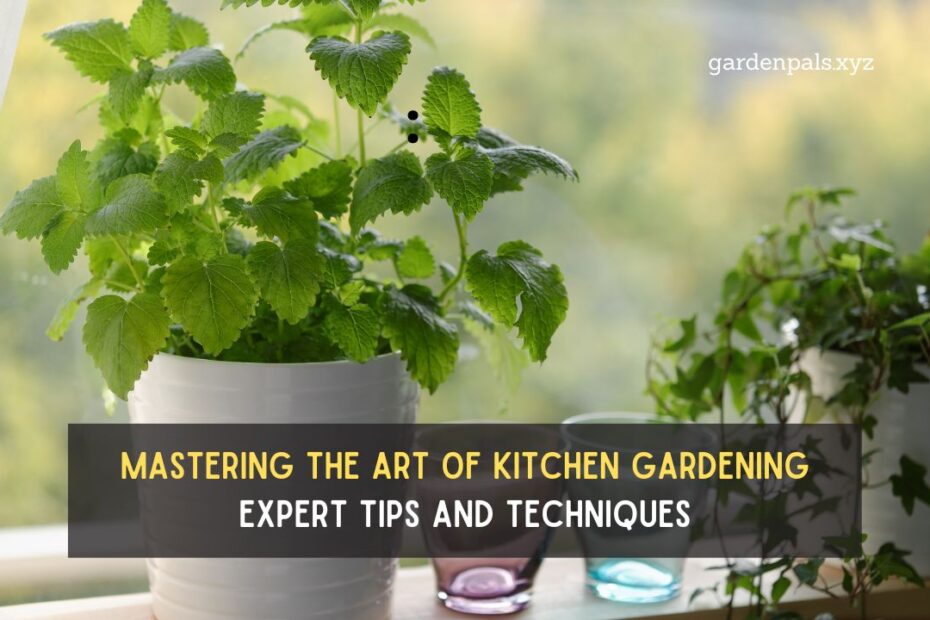Kitchen gardening, also known as indoor gardening or container gardening, refers to the practice of growing plants, herbs, and vegetables inside the confines of a kitchen or other indoor space. Unlike traditional gardening that takes place outdoors in a designated garden area, kitchen gardening utilizes pots, containers, or vertical planters to cultivate a variety of plants within the home environment.
The primary goal of kitchen gardening is to provide a convenient and accessible way for individuals to grow fresh produce, herbs, and flowers right in their living spaces. It is especially popular among urban dwellers or those with limited outdoor gardening space, as it allows them to enjoy the benefits of gardening without requiring a large yard or garden plot.
Kitchen gardening typically involves selecting suitable plants that can thrive indoors, ensuring they receive adequate sunlight, proper watering, and nutrient-rich soil. It also encompasses techniques such as pruning, pest management, and regular maintenance to promote healthy plant growth and maximize productivity.
1. Selecting the Right Plants for Your Kitchen Garden
Choosing the appropriate plants lays the foundation for a successful kitchen garden. Opt for herbs like basil, mint, and rosemary, which thrive indoors with proper sunlight and water. Vegetables such as cherry tomatoes, peppers, and lettuce can also be grown in pots or containers, making them ideal choices for compact spaces.
2. Providing Adequate Sunlight
Sunlight is crucial for the growth of plants. Place your indoor garden near a window that receives ample sunlight throughout the day. If natural light is limited, consider using artificial grow lights to supplement the plants’ light requirements.
3. Proper Watering Techniques
Overwatering or underwatering can hinder plant growth. Ensure that your plants receive the right amount of water by checking the soil moisture regularly. Use a watering can with a narrow spout to water the base of the plants, avoiding waterlogging and promoting healthy root development.
4. Soil Quality and Nutrient Enrichment
Use well-draining soil with added organic matter for optimal plant growth. Consider adding compost or organic fertilizers to enrich the soil and provide essential nutrients to your plants. Regularly monitor the soil’s pH levels to create a conducive environment for healthy plant growth.
5. Pruning and Harvesting Practices
Regular pruning helps maintain the shape and health of your plants. Trim dead or yellowing leaves to encourage new growth and prevent disease spread. Harvest herbs and vegetables when they reach maturity to ensure freshness and flavor in your culinary creations.
6. Pest Management Strategies
Keep an eye out for common pests like aphids, mealybugs, and spider mites that can affect indoor plants. Use natural remedies such as neem oil spray or insecticidal soap to deter pests without harming the environment or your plants.
7. Companion Planting for a Thriving Garden
Implement companion planting techniques to enhance plant health and productivity. Pairing compatible plants together can deter pests, improve soil quality, and maximize space utilization in your indoor garden.
8. Regular Maintenance and Care Routine
Consistency is key to a successful kitchen garden. Establish a regular maintenance schedule that includes watering, fertilizing, pruning, and monitoring plant health. This proactive approach ensures a vibrant and flourishing garden year-round.
9. Creative Container Gardening Ideas
Explore creative container gardening ideas to add a touch of aesthetic appeal to your indoor garden. Use decorative pots, hanging baskets, or vertical planters to maximize space and create a visually pleasing environment.
10. Sustainable Practices and Eco-Friendly Solutions
Embrace sustainable gardening practices by composting kitchen waste, using organic fertilizers, and conserving water. Incorporating eco-friendly solutions not only benefits the environment but also contributes to a healthier and more vibrant garden ecosystem.
Conclusion
Embark on your kitchen gardening journey armed with these expert tips and techniques. Whether you’re a novice gardener or an experienced enthusiast, cultivating a thriving indoor garden is within reach. With a little care, creativity, and dedication, you can enjoy the bounties of nature right in the heart of your home. Happy gardening!
